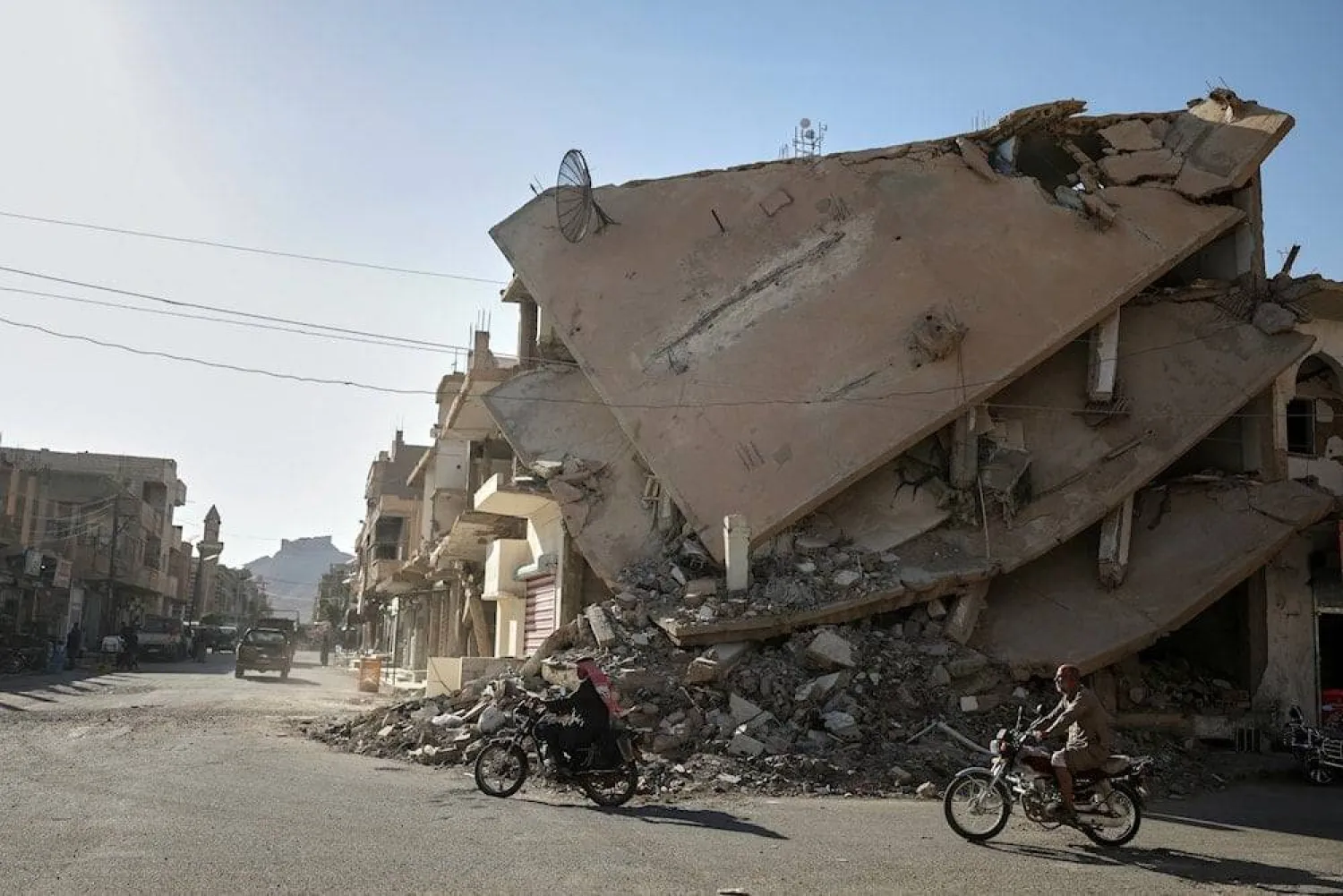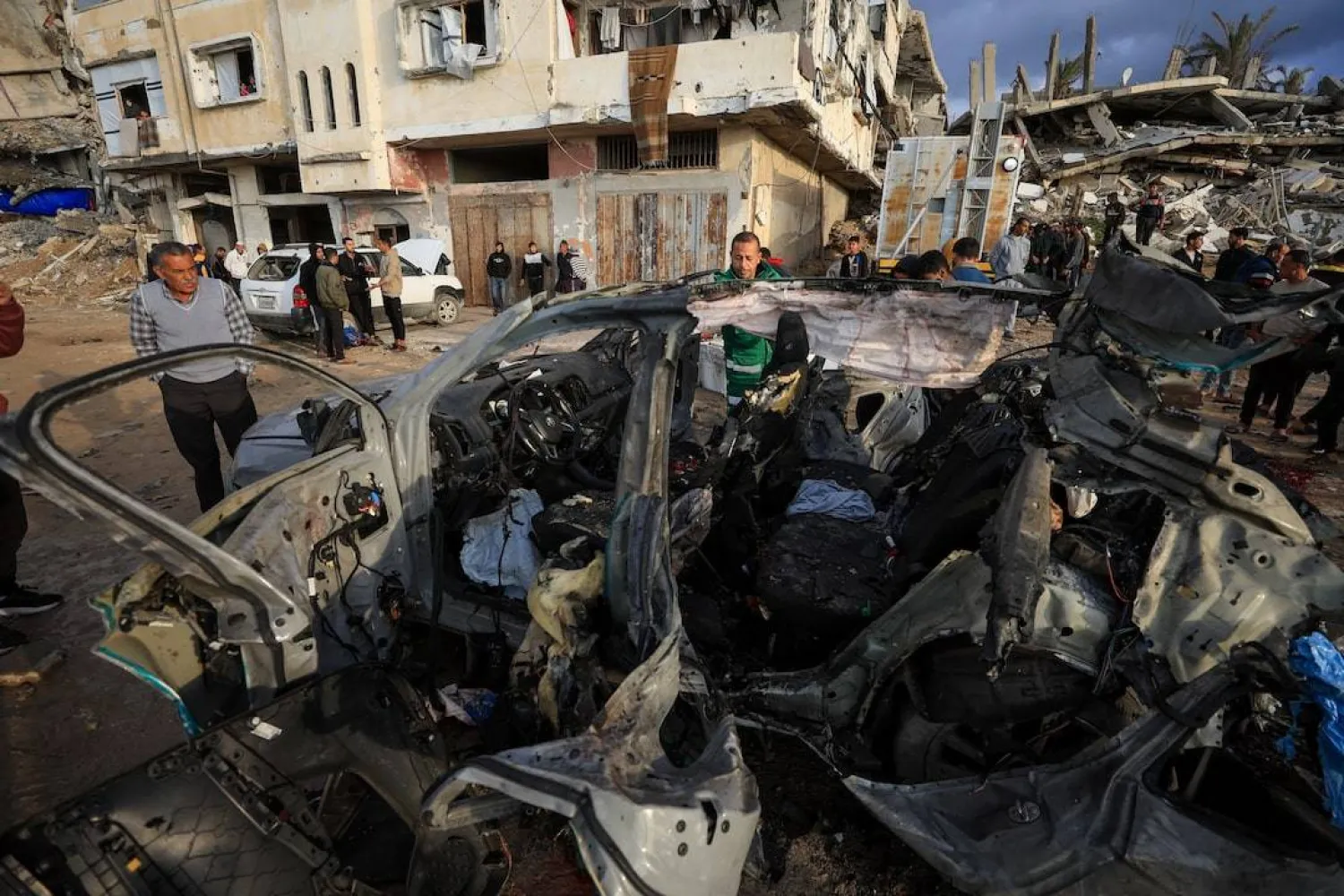After repeated Israeli airstrikes on the former Syrian Army's “54th Brigade” in Qamishli, northeastern Syria, and its civilian airport, Asharq Al-Awsat visited the site.
The team saw the significant damage caused by explosions of weapons and ammunition, with shrapnel hitting nearby areas. The attack resulted in one civilian death and another serious injury, according to medical sources.
The Asharq Al-Awsat team toured the base, located on the southern edge of Qamishli. Once the largest Syrian Army base in the region, it has become a key transit point for Iranian militia fighters traveling to Deir Ezzor, passing through areas once controlled by Syrian forces.
Inside the compound, dozens of military vehicles, tanks, and equipment were left behind, marking the bloody era of the Assad regime.
Torn photos of President Bashar al-Assad, his father Hafez, and his late brother Bassel were found scattered across abandoned buildings, with walls still displaying slogans praising the Assad family.
The military base, along with others in Hasakah province, remained under Syrian Army control until the fall of the Assad regime last Sunday. Abandoned vehicles and tanks were damaged by airstrikes, while ammunition and weapons in large trucks set for smuggling were burned.
Residents nearby said Russian forces had inspected the base on Saturday before the regime’s fall, planning to remove it. Others confirmed that the US military had warned the Syrian Democratic Forces (SDF) of an imminent Israeli airstrike.
An anonymous military source said the 54th Brigade housed air defense systems, ammunition, and rocket launchers. Syrian troops abandoned the base, leaving behind Russian-made vehicles, tanks, and armored carriers. Israeli warplanes then hit the base, destroying the weapons.
Witnesses in Qamishli described hearing explosions late Monday night for over two hours, with thick smoke and flames rising above the base and the airport.
Medical sources told Asharq Al-Awsat that a 27-year-old man was killed by shrapnel, and another person was seriously injured when the shrapnel hit homes in Qamishli during explosions at the ammunition storage at the military base.
The injured person underwent surgery to remove a shard from his chest and remains in critical condition.
A journalist from the Corniche neighborhood south of Qamishli described how shrapnel hit her home, causing part of the roof to collapse from the Israeli airstrike.
She told Asharq Al-Awsat, “We were terrified, hearing explosions around us. We never expected a large shard to hit the upper floor, puncturing the guest room wall. Fortunately, no one was inside.”
The airstrikes caused panic, and many residents fled from neighborhoods near the airport and military base to safer areas. Videos shared by local activists on social media showed the intensity of the attack, with thick smoke and flames rising from the base.
Asharq Al-Awsat Reports Aftermath of Israeli Airstrikes on Qamishli’s ‘54th Brigade’

Destroyed vehicles at the 54th Brigade in Syria’s Qamishli after Israeli airstrikes targeted it. (Asharq Al-Awsat)

Asharq Al-Awsat Reports Aftermath of Israeli Airstrikes on Qamishli’s ‘54th Brigade’

Destroyed vehicles at the 54th Brigade in Syria’s Qamishli after Israeli airstrikes targeted it. (Asharq Al-Awsat)
لم تشترك بعد
انشئ حساباً خاصاً بك لتحصل على أخبار مخصصة لك ولتتمتع بخاصية حفظ المقالات وتتلقى نشراتنا البريدية المتنوعة







